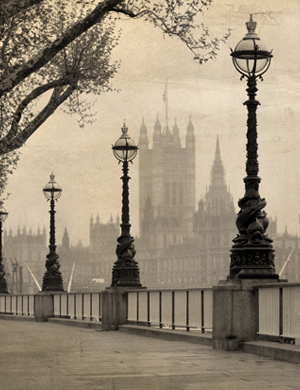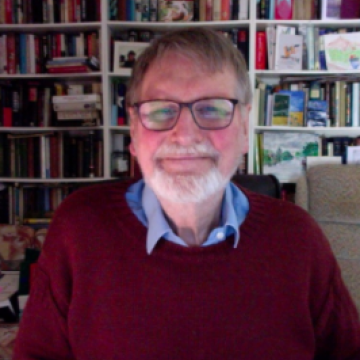Between Wars: Britain in Transition
A two-week exploration of key figures and pivotal events in Britain's interwar period.

In his preface in 1930 to his account of his younger life before 1900, Winston Churchill wrote that it depicted ‘a vanished age’:
“The character of society, the foundations of politics, the methods of war, the outlook of youth, the scale of values, are all changed, and changed to an extent that I would not have believed possible in so short a space without a domestic revolution”.
After the First World War, Britain remained the world’s largest trading nation and second only in manufacturing to the United States. Its empire was actually larger after the Great War than before. Despite enormous losses of manpower and wealth, Britain maintained a leading position as a great liberal democracy. Yet it faced internal social revolution, a dislocated world economy, threats from rivals to its empire around the world, and, in close proximity to the European continent, the emergence of new ‘propaganda states’, totalitarian in their political systems and the implacable enemies of liberal democracy.
The change which came about as Britain faced up to these challenges was profound, and yet it had occurred without a revolution. Over the two weeks we will consider, using the lives of key figures of the time to look below the surface, both what changed and how it happened.
| Topic | Description |
|---|---|
|
1. The shock of the post-war world |
A Victorian and Edwardian world awakes to post-war world realities |
|
2. Britain on the world stage after the Great War |
The Treaty of Versailles and the re-settlement of Europe. Britain’s global empire after the Great War. The issue of Ireland. Transformation of the Dominions in the direction of ‘Commonwealth’, and the ‘anomaly’ of India. |
| 3. Socialism in Britain |
How the confident bustling world Edwardian Liberalism evaporated. After the revolution in Russia, the rapid rise of the Labour Party representing the newly enfranchised Working Classes. The reaction on the right and centre of British politics, under Stanley Baldwin, the preeminent figure in British politics between the wars. |
| 4. Modernism and modernisation |
The decline and transformation of the old aristocracy, and the rise of the middle classes. Literary modernism and the modernisation of the media, notably radio. The mass movement for adult education. Electrification, the fascination with speed in transport and all forms of modern technology. |
| 5. Over the cliff |
The economic catastrophe of the Great Depression of 1929 falling on an already weak economy which never recovered after the dislocations of the Great War. The scourge of unemployment. The initial rejection of trade protection, accompanied by the growth of cartels and trusts. The Great Depression shutting the door on any return to the export-led prosperity before the Great War. |
| Topic | Description |
|---|---|
|
6. Political extremism |
At the same time as Franklin Roosevelt’s New Deal in the United States, a national coalition government created in 1931 to deal with the economic crisis. An innovative politics of the centre which pushed political extremism of left and right to the margins. |
|
7. Economic reconstruction and social reform |
Major economic restructuring in the 1930s. Deflation and a dramatic decline in the birth rate across society creating prosperity for employed people. General tariff protection and tight control of public spending followed by green shoots or recovery. A house building boom leading a general economic recovery. Increased spending on social services for poorer people. |
|
8. Mass consumption and Mass Culture |
In the 1930s, new forms of mass consumption and mass culture. A popular press, talking films, newsreels and radio. The heyday of the cinema. Substantial migration of people within the United Kingdom. New applications of science and increased prosperity for many. |
| 9. The totalitarian threat, appeasement and rearmament |
Various approaches to the dictators. A considerable rearmament from the mid-1930s underlying the policy of ‘appeasement’. So, albeit ‘alone’, Britain stood up to totalitarianism as a first-class military superpower at the outbreak of a new European war in 1939. |
| 10. How did Britain cope? |
A balance sheet, with summary and conclusions |
Background for the Course
- Clarke, P. Hope and Glory: Britain 1900-2000 (second edition. 2004)
- Clarke, P., The Locomotive of War: Money, Empire, Power and Guilt (Bloomsbury 2017)
- Egerton, D., England and the aeroplane: Militarism, modernity and machines (Penguin 2013)
- Overy, R., The Morbid Age: Britain and the crisis of civilisation, 1919-39 (Penguin 2010)

